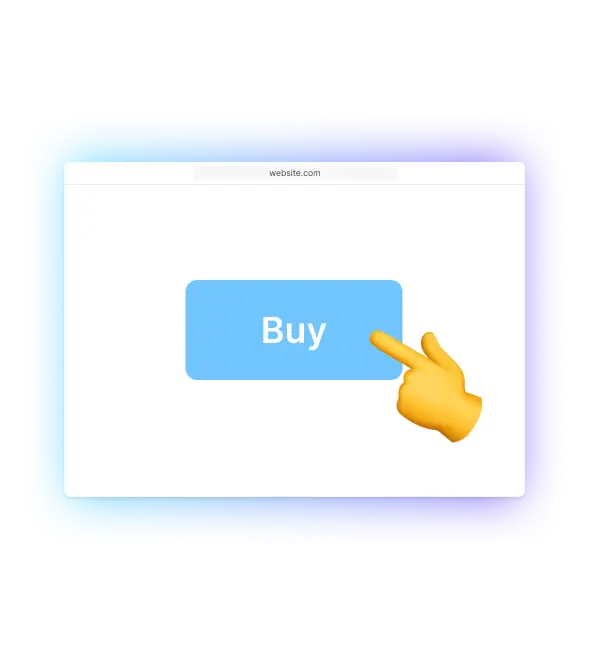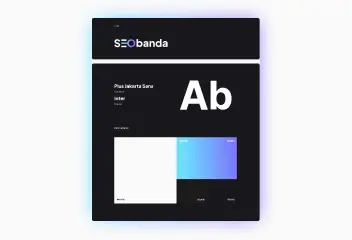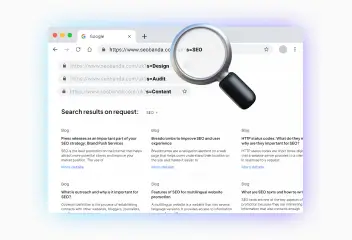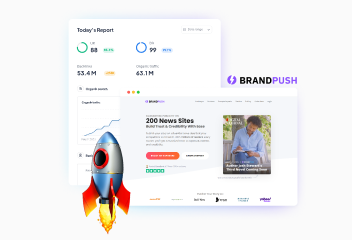Conversion: How to turn visitors into customers
Conversion is one of the key factors in the effectiveness of any website. Conversion is the percentage of visitors who complete a targeted action, such as a purchase, registration, or form submission. Increasing online conversion rates can have a significant impact on the success of your business and bring you more customers. One of the most effective ways to increase conversion is to optimize your website with SEO, as the most interested leads come from the search engine.





What is a conversion?
Online conversion is the process where a visitor to your website performs a desired action that you have defined as a goal. Target actions can vary depending on the type of website:
- Purchase of a product or service
- Registering on the website
- Filling out a contact form
- Downloading materials (e-book, whitepaper, etc.)
- Subscribe to a newsletter
Conversion rate is the ratio of the number of conversions to the total number of website visitors, expressed as a percentage. If 100 visitors came to the site and 17 of them performed the targeted action, the website conversion rate is 17%.


How does SEO affect conversions?
SEO helps to improve your website’s visibility in search engines, which increases the amount of organic traffic. SEO is the most loyal type of marketing because people come to your website on their own, which means they are interested in the content you provide, so SEO can also have a significant impact on conversions. Here are some ways SEO can improve conversions:
Improving user experience (UX)
- An optimized website with clear navigation, fast page loads, and responsive design makes the site more user-friendly, which increases the likelihood of conversion.
Targeted content
- SEO helps to create relevant and targeted content that meets the needs of users. High-quality content meets the needs of the audience, which increases trust in your brand and drives conversions.
- Local optimization allows you to attract customers who are looking for goods or services in your region. This is especially important for small businesses that focus on a local audience.
Meta tags and descriptions
- Optimized titles and meta descriptions help grab users’ attention and bring in more customers from search engines. When users see relevant and engaging titles that match their query, they are more likely to visit your site, which increases the chances of a conversion.

Increase visibility
for your business: SEO solution for growth!


What types of conversions are there?

Direct (main) conversions
Direct conversions are the main goals set by the business. They are of the highest value to the company because they directly affect revenue and development.
- Purchase of a product or service: The most obvious conversion for online stores and services.
- Subscription: Subscribing to paid services or products.
- Filling out an application: Filling out an application form for advice, services, or products.
- Downloading paid content: For example, e-books, programs, videos, or other paid resources.
Indirect (auxiliary) conversions
Indirect conversions are not the ultimate goals, but they contribute to the achievement of the main goals. They help to build brand trust, engage users, and increase engagement.
- Registration on the website: The creation of an account by a user.
- Newsletter subscription: Subscribing to newsletters or promotional emails.
- Downloading free content: For example, free e-books, manuals, checklists, etc.
- Add to cart: Adding an item to your cart without completing the purchase.
- View important pages: For example, the contact page, product details, and the About Us page.
Micro conversions
Micro-conversions are small actions that users take on the way to making a main conversion. They allow you to understand user behavior and how they interact with a website.
- Viewing a product: Viewing a product card or detailed product information.
- Click on CTA (Call-to-Action): Clicking on a call to action, such as “Buy Now,” “Sign Up,” etc.
- Time spent on the site: The duration of a user’s session.
- Video Viewed: Viewing video content on a website.
Engagement conversions
These conversions show the level of user engagement and interest in your content.
- Participation in webinars and events: Registration and participation in online meetings, webinars, and other events.
- Survey responses: Filling out surveys and questionnaires.
- Downloading demo versions: Downloading free demos of products or services.
Most of these types of conversions do not directly affect the success of the business, but they all bring users closer to the main conversion action and allow you to evaluate the effectiveness of advertising campaigns.


How is the conversion rate calculated?
The formula for calculating the conversion rate is as follows:
Conversion rate = (number of conversions / number of visitors) * 100%.
For example, you have launched a new marketing campaign and are calculating the results in a month. During this time, 10,000 users visited your website and 500 of them bought your product.
Conversion rate = (500 / 10000) * 100% = 5%.
This means that the website has a 5% conversion rate over the past month.

Increase visibility
for your business: SEO solution for growth!


How to increase website conversions?
Users are ready to make a conversion action if they are interested in the product and have received what they were looking for. So to increase conversion, you need to take the following steps:
- Make the website user-friendly and fast. If the site takes longer than two seconds to load, the user will leave and not make a conversion action. You need to adjust the site loading speed so that people quickly get what they want to see.
- Navigation. Just like with loading speed, navigation affects conversion. If a user wants to buy a product but doesn’t see the “Buy Now” button, they won’t waste their time and will simply leave the site without making a conversion action.
- Provide interesting and high-quality content. Sometimes people lack some information to make a decision about buying a product or service. If you are the one to provide them with this information, they will realize that you are an authority on this topic and will buy the product on your website.
- Always call for action. Remind people that they can get more information or order a product by clicking on a button. Make sure that this button is visible everywhere and when the user wants to get advice or buy a product, he will definitely click on this button.
- Make clear instructions and simple forms. The less information a user needs to fill in, the more likely they are to do so.
Make your website as simple, clear, and informative as possible, and then the conversion rate will grow every day.


Conclusion
Conversion is the main indicator on any website, because it shows what percentage of users have performed the action we need. In addition to the main conversion, there are also auxiliary, micro, and engagement conversions. They help determine the level of user interest and evaluate the quality of the marketing strategy. To improve conversions, you need to make your website as clear as possible, provide users with the necessary information, and call them to action.
You may also like it

Brand identity: The key to brand recognition and SEO success
Every product has its own unique feature that sets it apart from other brands. It could be a special font, a unique mascot, or an interesting logo with the right...

What is a dynamic URL and its impact on SEO
A dynamic URL (Uniform Resource Locator) is a web address that changes depending on the user's request or specific parameters. It differs from a static

Press releases as an important part of your SEO strategy: Brand Push Services
SEO is the best promotion on the Internet that helps attract more potential clients and improve your market position. The use of press releases is an important SEO...












